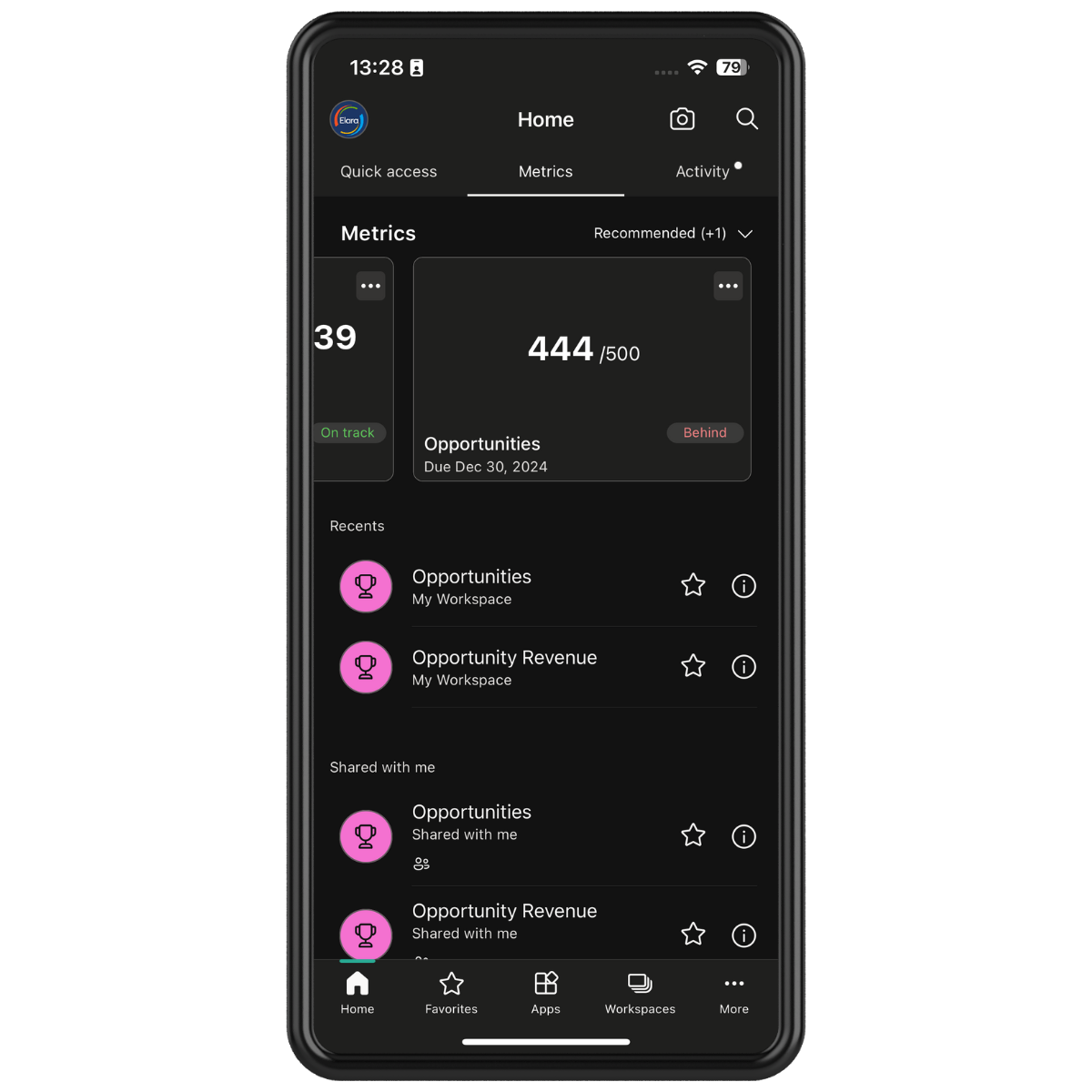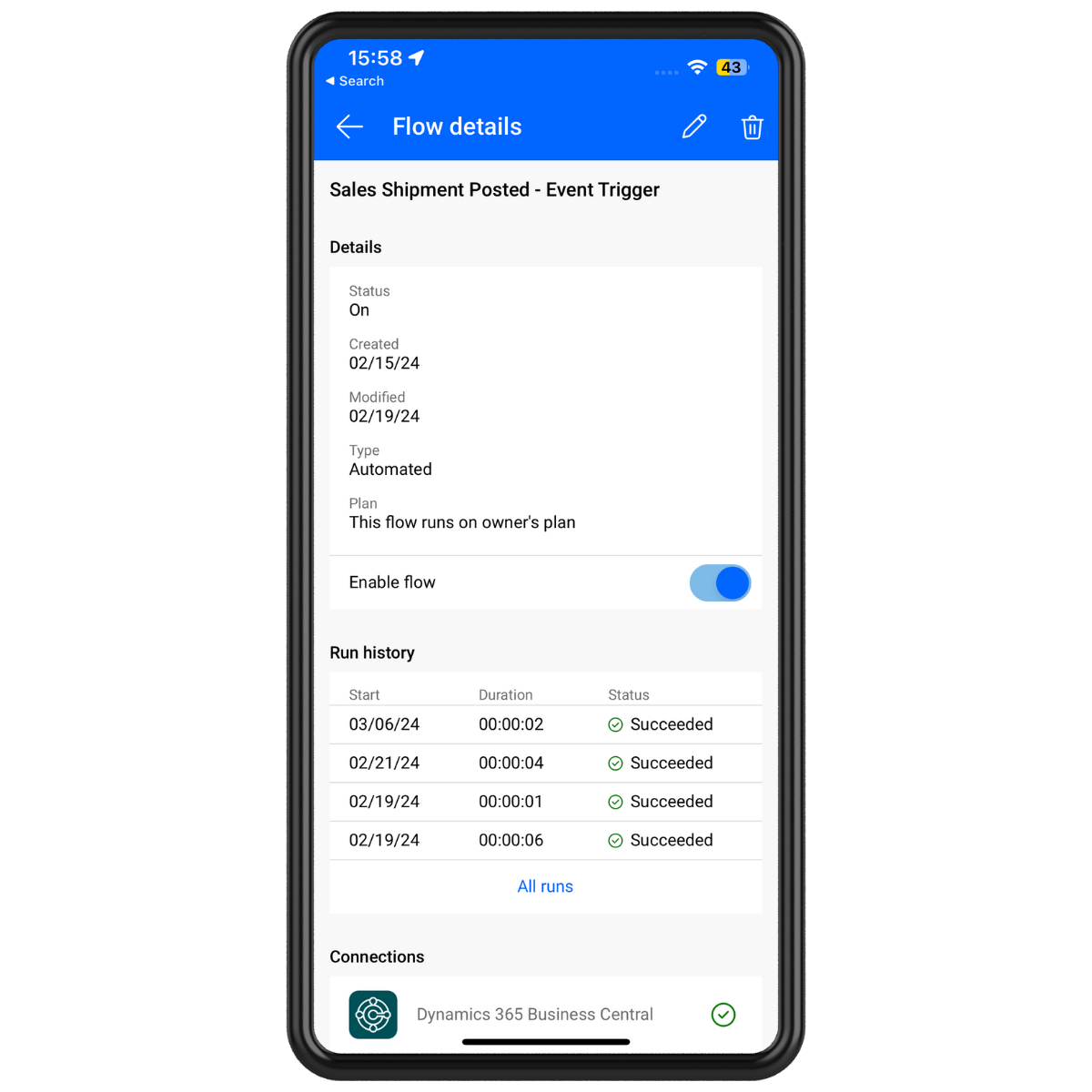Boost Your Productivity Anytime, Anywhere with Power Platform’s Mobile Solutions
Let’s face it, in today's world there's no need to spend precious hours in front of a computer when you can do a lot from your phone. Fortunately, with the Power Platform's collection of mobile apps—free for download from your app store— you can supplement your desktop applications with your mobile device.
In this article we’ll go over some the of the best, mobile friendly features of each app that will take your productivity and creativity to new heights.
If you’re new to the power platform or want a crash course on what each software does, checkout my intro article before continuing.
Power BI
This is the newest entry to the roster of mobile applications in Power Platform. You can now create reports in Power BI web service or Power BI desktop that have a mobile layout for use within the app. Aside from this, within the app you can receive alerts for key metrics on your device, use QR code scanning for quick insights, and collaborate with team members directly on the report. Let’s go over these a bit and what they can do.
Metrics tab & scorecard
The scorecard visual displays real-time progress towards a goal
See all of your metrics assigned to you from every report on the metrics tab
Set up alerts to notify you of progress changes or significant changes like a drop in production levels
QR code scanning
Create a QR code for a Power BI report or dashboard tile and open it instantly within the mobile app
Ideal for on-site data retrieval, such as scanning a code on equipment to view its maintenance history or performance statistics in real-time. I’ve also seen this used as a way to see booked conference rooms as employees scan the barcode posted outside of them
Great way of bridging the gap between the physical and digital worlds
Collaboration through the app
Power BI gives ability to comment on visuals to communicate with members of your team without having to jump on a call - can even mention your team members with @ and directly notify them
The mobile app gives you an activity pane (seen next to metrics in the photo above) that shows you all of the new comments, mentions, and reports/workspaces assigned to you. Basically anything happening with you and your Power BI team will show here.
Works way better than the typical Microsoft emails for mentions and activity we get all the time. Now, you have a designated space where you can easily view and understand your Power BI activities.
Power Automate
Perhaps the least well known Power Platform mobile application is Power Automate. This app lets you manage current flows you’ve created or shared with you, and it lets you trigger flows from the app itself. There’s also a built in function to review pending approvals with a click of a button instead of manually doing it through an email.
Managing flows
Oversee your all your flows and monitor their runs and status
Activate or deactivate flows at will if there’s an error or other users need to edit
Even edit your flows from within the app instead of having to go to the desktop website
Triggering flows
The app can be used as a trigger for an automated flow, which has the same connectors as a typical flow just with pressing a button in the app as a trigger
A good use case is for field technicians or sales reps out of the office that need to update their status on a project as its happening. I’ve even implemented this on an app I created and triggered a flow on the subway in Japan, going home from work
If you already have a flow that could use a this app as trigger, consider simply replacing the current trigger with the app and test it from there
Approvals
You can review, approve, or reject approval requests from within the app in the separate approvals tab
Great if you’re already using the Power Automate approval workflows on desktop as the mobile approvals extends this directly
The interface gives you all the context you need from the approval too. That way, you don’t have to rely on emails or going back to your browser to see more info before approving
Power Apps
Power Apps is of course the oldest Power Platform software optimized for mobile. It was built as a low-code application to leverage your device’s capabilities through business-oriented workflows. This means that, yes, you can access mobile specific features like the device’s GPS location, camera integration, and push notifications to your device.
Push notifications
Lets you create tailored push notifications within the app for anything you want to communicate
Great for guiding users with how to use the app or communicate new features (left photo)
Can be configured to when the app opens, specific app interactions, data changes, etc.
Camera integration
Similar to the Power BI bar code scanner, integrate your Power App with the user’s mobile camera to enable scanning bar codes directly or even capturing photos for later analysis
A common use case is to scan receipts or bills for instant recognition and submitting these for approval within the app
With AI getting better, the Power App can even submit these photos for text analysis, object detection, image classification, and other future advancements
GPS location
Allows the app to enable location based services and react to a change in location or capture the user’s current geographical location (upon the users permission, of course)
Any location sensitive operations are perfect for this location capture. For example, when your delivery has been received you can capture the exact location and time the customer accepted it
Keep in mind this data can be sent back to your other systems using Power Platform’s many connectors, where it can be analyzed and optimized for future operations
So there you have it. Some of the best features on each of the Power Platform apps so far. Copilot also has an app I’ll be going over in the future.
You also might’ve noticed that although these apps do great things on their own, they work best integrated with the other apps and parts of the Microsoft ecosystem. For example, you can have a mobile Power App for your employees to submit expenses, have an Power Automate flow that managers can use for approvals, and then a Power BI report that shows the output of these processes for executives. The limit to your potential productivity and time savings truly depends on your creativeness in leveraging these solutions.
The technology is here, now is the time to put it to good use.




